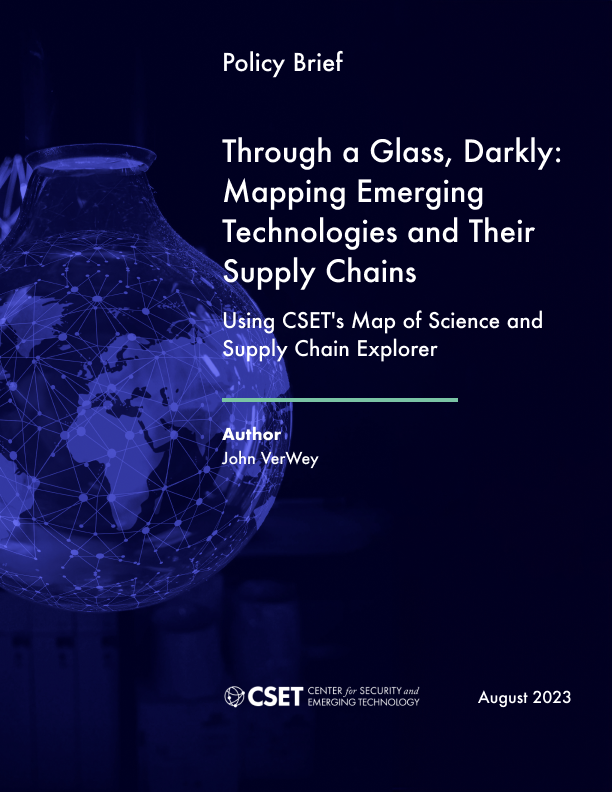Executive Summary
Emerging technologies are of keen interest to policymakers, private firms, and researchers because of their perceived economic and national security promise. Private firms and researchers hope to invent and commercialize the next ubiquitous technology. Governments want to understand what policies they can pursue to increase domestic innovation in these technologies and, in some circumstances, deny adversaries access to these technologies. At the same time this interest in emerging technologies has spiked, ongoing supply chain interruptions have exposed the worldwide reliance and fragility of some technologies’ global value chains.
This confluence of factors has highlighted shared challenges and opportunities: emerging technologies and supply chains are largely developed and controlled by private-sector firms. However, information about both can be revealed through careful analysis of public information. This information can inform policymakers’ efforts to increase competitiveness in both emerging technologies and their supply chains. This paper argues that policymakers’ efforts to increase competitiveness in emerging technologies and resilience in supply chains should be closely coordinated and aligned.
Efforts to identify emerging technologies and associated supply chains are challenged by the fundamental nature of emerging technologies. By definition, emerging technologies are new and rapidly changing, making them hard to track. Because these technologies are inherently immature, the underlying supply chain of people, processes, products, services, information, and resources that supports the technology is difficult to define. Additionally, technology development is diffuse and occurs in universities, firms, and government labs, often simultaneously and across borders.
Academia, industry, and government have attempted to identify emerging technologies for decades. Each of the analytical approaches used by academia, industry, and government comes with trade-offs. This work is inherently speculative and predictive. There is no agreed-upon methodology for identifying emerging technology.
In contrast, the concept of supply chain security is much more mature. Industry maintains a wide variety of supply chain risk management practices designed to increase resilience, there is an active field of academic research focused on mapping global value chains, and governments have experience managing supply chains, particularly those relevant to national security.
Efforts to identify emerging technologies and increase supply chain security both require, and profit from, the same analytic base. This paper first assesses the challenges of promoting emerging technologies and the tools that may assist in this. It then turns to supply chains and shows how the similar sources of information and analytical methods can increase resilience. This paper concludes with a template policymakers could use to map emerging technology supply chains based on two tools developed by CSET’s Emerging Technology Observatory (ETO): the Map of Science and the Supply Chain Explorer.
